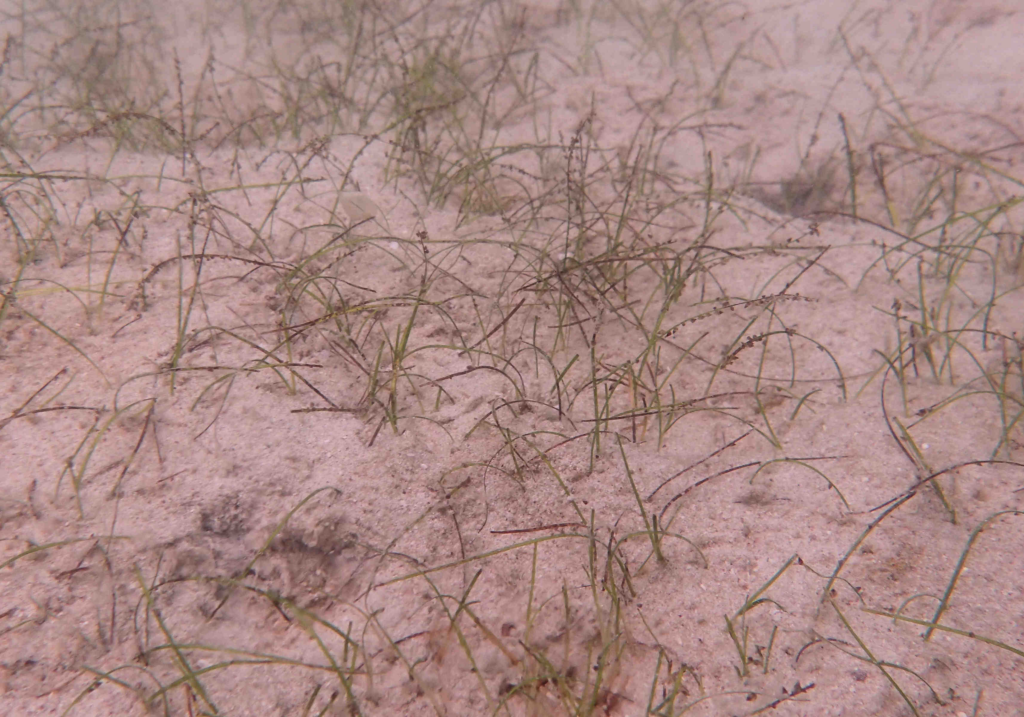Cymodoceaceae Family of Manatee Grasses
 Shoal Grass, Halodule wrightii. A representative member of the Cymodoceaceae Family of Manatee Grasses.
Shoal Grass, Halodule wrightii. A representative member of the Cymodoceaceae Family of Manatee Grasses.
Phylogeny: Manatee Grasses of the Cymodoceaceae Family are not technically grasses and plants that do not lend themselves to the classic taxonomic groupings that animal do. Some botanists use a function- based system of classification rather than a strictly taxonomic system. Because the rest of this website uses the standard taxonomic based system, we will continue to use that system here. They belong to the Phylum Tracheophyta, and in the Class Magnoliopsida and the Order Alismatales.
Distribution: Manatee Grasses are found in the Atlantic Ocean and the Indo-Pacific, in tropical and sub-tropical waters in both wetlands fresh water or marine habitats. There are sixteen species in the Cymodoceaceae Family of which one species are found along Mexico’s East Coast and one found along both of Mexico’s East and West Coasts. They may live completely submerged, have floating leaves and flowers, or have leaves and flowers that emerge from the water. They can be found growing on sand, mud, silt, or rocky substrates. Where water clarity allows for sufficient sunlight penetration, Manatee Grasses can grow to depths exceeding 30 m (100 feet). Most species are found in much shallower water, because they tend to grow in turbid in-shore water.
Morphology: Manatee Grasses are flowering marine plants that unlike Bryophytes, are vascular plants that have have tissues (phloem and xylem) that allow for the transport of water and nutrients within the plant via leaves, roots and stems. They have a cuticle (waxy layer to hold in water) and stomata (pores for gas exchange). Tracheophytes may either reproduce by seeds or spores. They are dicotyledonous with dicots that produce two seed leaves (the first leaves to emerge from a seed). Their plants usually have branching veins in their leaves, and four or five flowers petals. These plants can vary significantly in appearance. Some are wiry, others are made of air-filled tubes. Manatee Grasses can grow to lengths exceeding 50 cm (20 inches).
Ecosystem Roles: Manatee Grasses are valuable indicators of a healthy ecosystem. They provide food and shelter to many species of shore birds, fish, sea turtles, and invertebrates. These plants often grow in large beds of numerous individual plants that are an important nursery for juvenile fish. Manatee Grasses also are critical for healthy coral reefs as they help to remove sediment from the water that might otherwise smother the coral polyps.
Reproduction: Manatee Grasses are angiosperms (flowering plants) that produce flowers and seed containing fruits while entirely submerged in marine ecosystems. They can exist as separate male or female plants, or have both sexes on one plant. may either reproduce by seeds or spores.